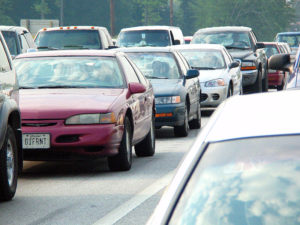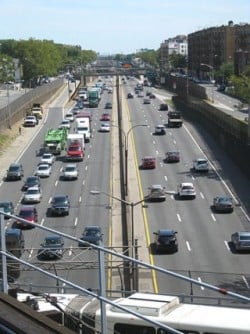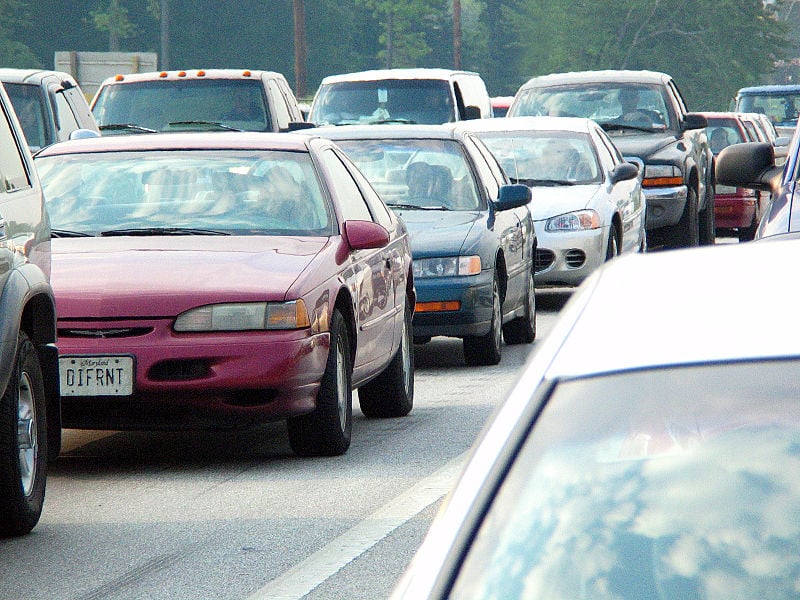It’s incredible! We 221.71 million American motorists in 2016, with our roughly 268.8 million motor vehicles, each drove an average 14,317.7 miles. Meanwhile, in narrowing the focus, recent related Federal Highway Administration data show male drivers between ages 35 and 54 drive the most; in this case, a total annual average 18,858 miles, with the least amount of driving done by female drivers age 65 years and older, registering a yearly average 4,785 miles. Doing the math, driving 14,317.7 miles in a single year works out to an average 39.23 miles driven by us automobilists every day! It is obvious American drivers are putting up some really amazing mileage numbers.
Moreover, overall in 2016, American motorists traveled a combined 3.1744 trillion miles.
Data further reveals that per-capita driving in the U.S., after peaking at 10,181.4 miles in 2005, in 2016 finds that 9,815.6 per-capita miles were driven. This charts along an upward trajectory starting in 2013 when such driving totaled 9,441.85 miles.

Total automobile fuel consumption in 2016 reached 135.47 billion gallons, 1 billion fewer gasoline gallons consumed compared to 2014. For those two years, the amount of gas guzzled per vehicle was higher in 2014 despite per-capita driving then being less (9,496 miles in 2014 vs. 9,815.6 miles in 2016). Meanwhile, the level of consumed fuel reached an all-time high of 140 billion gallons in 2007.
So, what exactly is spurring the growth? Lower gas prices, a robust economy, a preference for driving, higher employment numbers, an uptick in ride-hailing use, lower transit ridership, all of the above, what?
It is worth noting that energy, which had been the sector leading in emissions output since 1978, swapped places with transportation in 2016. In the U.S., the latter now accounts for 29 percent of emissions, now the largest of all sectors. Within transportation, cars and light trucks (light-duty vehicles or LDVs) rank as the leading contributor of greenhouse gas emissions from transportation: A whopping 60 percent – by far the most.
That’s the bad news. The good news is that since 1975, among the fleets of new cars and light-duty trucks, LDVs carbon dioxide emissions have been in retreat, cars’ relative contribution going from roughly 6.1 tons per year (tpy) in 1975 to right around 2 tpy in 2016, while light trucks’ relative contribution rose slightly, climbing from 1.9 to just above 2 tpy.
So, when looking at the corresponding emissions numbers, one must ask what this all must mean.
In America, motor vehicle use is rising and there are more and more miles being driven each year. This says that travelers are becoming more automobile-dependent which indicates that said travelers put a high value on motor vehicle use and place a far lesser value on driving alternatives to the detriment of air quality and human health. Post 2016, annual miles driven on American roadways have exceeded 3.2 trillion.
Hopes are being pinned on answers such as motor vehicle electrification and on autonomous motor vehicle travel.
As for the latter, success has been limited. Sales of new electric vehicles could be more brisk – two percent of the 17 million new cars and light-duty trucks sold in the U.S. in 2018 were electric or 328,118 total.*
Aside from this, some states are going so far as proposing internal-combustion-engine-equipped-motor-vehicle-sales bans like California, the date specified: 2030.

It would also be comforting if greenhouse gas emissions domestically were declining. Not so. Between 1990 and 2017 emissions have risen.
Implementing strategies like congestion pricing, transit expansion, increased hybrid and electric vehicle sales, greater bicycle usage and more emphasis on walking for shorter trips, banning cars from cities outright or restricting their use could and would all help. Contrary to popular belief, adding more lanes of highway won’t.
Image: U.S. Census Bureau (upper)
* New electric vehicle sales data has been added (See above). The updated data reflects sales of new electric vehicles in the U.S. for year 2018.
This post was last revised on Dec. 27, 2020 @ 7:22 p.m. Pacific Standard Time.
Published by Alan Kandel

Absolute BS! CO2 is NOT a pollutant. The tiny increases from 0.03 to 0.044% over the last 20 years have contributed to greening the earth and increasing crop yields. It has NO EFFECT on ambient temperatures.
“Decarbonizing” the world is just a way to re-distribute income and force Socialism, then Communism on the world population. The UN readily admits there is no climate “crisis” and that is intended goal of “climate change” policies.
Forcing people out of their IC cars into mass transit, bicycles and electric cars will not work…….and will be a form of regressive taxation on the poor and middle class while wealthy folks will still be able to afford real cars, not glorified unreliable golf carts. People don’t want expensive electric cars that have to have the batteries replaced in 4 – 5 years for thousands of dollars……….the market is telling you than.
Your own statistics prove people don’t want anything other than IC engine cars for transportation because it’s easy, reliable, safe and relatively inexpensive when the government lets the free market determine gas prices and does not attempt to disincentive driving by more regressive taxes on gasoline…….like they do in Commie Kalifornia.